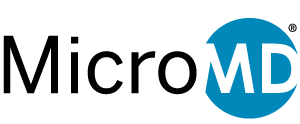Another year means more changes from CMS’s Final Rule…
It comes as no shock that the Center for Medicaid and Medicare Services (CMS) has made adjustments for the 2019 Quality Payment Program (QPP). Practices and software vendors have grown to expect these changes year over year. We all work diligently to modify workflows accordingly to bring in positive payment adjustments. With that being said, what changes were made to this reporting year? How will the 2019 CMS final rule’s changes affect your practice? Let’s find out.
Modifications to Who Has to Report
In order to include more medical professionals, CMS expanded the eligibility to more clinicians. In 2019, the following clinicians are eligible to participate in MIPS…
- Physical therapists
- Occupational therapists
- Qualified speech-language pathologists
- Qualified audiologists
- Clinical psychologists
- Registered dietitians
- Nutrition professionals
The main goal of the QPP remains in finding better ways to assess and manage the overall health of patients across the country. Allowing more clinicians to participate in the program enables CMS to collect a larger pool of data. From here, they can make assessments on how to improve healthcare overall.
Low Volume Threshold – Update
In an effort to ensure that smaller practices and those within rural communities find success in the QPP, CMS continually seeks ways to relieve provider burden. To continue this, CMS created a third criteria for the low volume threshold. This exempts physicians who meet one, or more, of the following criteria…
- Perform $90,000 or less in Part B allowed charges for covered professional services
- Provide medical care for 200 or fewer beneficiaries
- Provide a total of 200 or fewer covered professional services billed under the Physician Fee Schedule (PFS)
For clinicians deciding whether to participate in 2019, if even one of the above items are met, you can choose to opt out of participating. Providers who meet one of the above criteria may also choose to opt into the program.
Payment Adjustment Possibilities
Now, this adjustment will not take place until 2021, however, it is important that you are aware of it now. Last year, the maximum adjustment sat at +/- 5%. This year’s is higher at +/- 7% which raises the stakes a bit when it comes to making decisions on how to change your workload to meet these measures and bring in the positive adjustment.
2015 CEHRT Requirement
For practices utilizing 2014 CEHRT EHR, the time has come to upgrade your software or switch software vendors. Success in the promoting interoperability category depends upon utilization of a 2015 CEHRT EHR program. This means that your employees and your practice may need to invest in additional training, software, or upgrades in order to attest in the upcoming year.
While this requirement remains the largest change for this category, it is important to note that the entire promoting interoperability category was once advancing care information.
Clinical Quality Language (CQL)
Now, this may not mean a lot to providers, but it will. CQL refers to the way that quality measures are calculated behind the scenes through your EHR platform. Where this begins to affect clinicians is in how they document measures, timeliness of submission, and manual entry work. For example, clinicians who prescribe medications electronically will now be on board to manually enter fill date information. Also, providers must confirm with the pharmacy that the prescription was in fact filled. This manual step needs to be completed in order to attest for the measure.
All of the changes that you see laid out before you are just a glimpse into what is to come in 2019 for reporting for QPP. Dive into your studying up on the program – success is within reach if you are prepared to make changes and adjust.
Are you interested in learning more about how MicroMD can help your practice attest for QPP in 2019? Visit us at micromd.com or call us at 800-624-8832
Looking for PM or EMR Software?
MicroMD PM and EMR/EHR is flexible and can fit almost any specialty. Let us help you get back to the business of healing.









